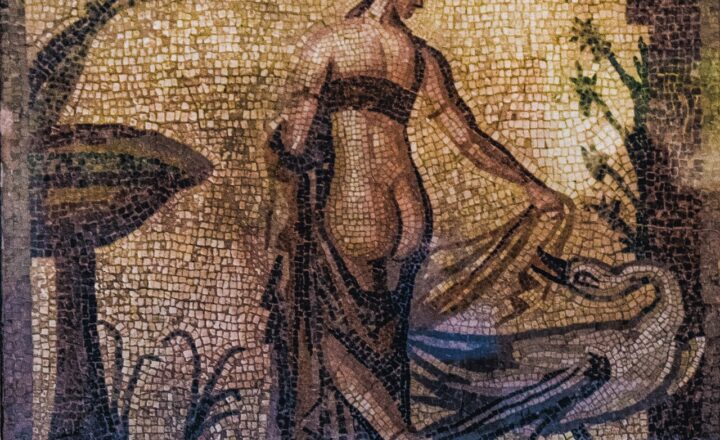The Mystery of Stonehenge: What Was the True Purpose of This Ancient Monument?
November 15, 2024

Stonehenge, an enigmatic circle of massive stone blocks, stands sentinel on the Salisbury Plain in Wiltshire, England. This prehistoric monument has captivated historians, archaeologists, and curious minds for centuries. What was Stonehenge’s true purpose? Was it an astronomical observatory, a religious site, a burial ground, or something entirely different?
This article will explore the various theories surrounding the purpose of Stonehenge, its construction, and its significance in the context of ancient societies.
1. A Brief History of Stonehenge
Stonehenge is believed to have been constructed between 3000 BC and 2000 BC. Its development occurred in several distinct phases, beginning with a circular earthwork enclosing a ditch and bank known as the henge. Over the centuries, the site underwent significant modifications, including the addition of the famous standing stones we see today.
The structure consists of a series of concentric circles made up of different types of stones, primarily sarsen sandstone and bluestone. The sarsens, which are the larger stones, were likely sourced from local quarries while the smaller bluestones originated from the Preseli Hills in Wales, approximately 200 miles away. Such transportation of heavy stones during the Stone Age hints at sophisticated logistical planning, advanced collaborative effort, and impressive engineering skills among the builders.
2. Theories Surrounding Stonehenge’s Purpose
The purpose of Stonehenge remains an intriguing subject of debate. Here are some prominent theories:
A. Astronomical Observatory
One of the most famous theories is that Stonehenge served as an ancient astronomical observatory. This hypothesis is supported by the alignment of the stones with solar and lunar events. The entrance to the monument faces the Sunrise on the summer solstice, while the heel stone aligns perfectly with the sunset of the winter solstice. These alignments suggest the site was used to mark the changing seasons, which could have been integral for agricultural practices of ancient societies.
B. Religious or Ceremonial Site
Another widespread theory posits that Stonehenge was a sacred site for worship or ceremonies. Archaeological evidence indicates that the area was likely used for burial practices. The discovery of cremated remains and grave goods near Stonehenge suggests the complex served as a religious center, perhaps as a place of healing or a pilgrimage site.
This theory is supported by the fact that ancient cultures often built monumental structures to honor their gods, mark significant life events, or commemorate the deceased.
C. Burial Ground
The site’s connection to funerary practices lends credibility to the idea that it operated as a burial ground. Excavations around Stonehenge have revealed numerous burial mounds on the landscape, known as barrows. These barrows contained human remains and artifacts that indicated those interred there held significance in their communities.
This perspective on Stonehenge reinforces the notion that its creators valued the dead and sought to honor them in a place of reverence.
D. Social and Political Significance
Some researchers argue that Stonehenge held substantial political and social importance. It may have been a unifying symbol for the diverse communities across Britain during the Neolithic and Bronze Ages, facilitating gatherings and cooperation among different tribes. By functioning as a major site for large assemblies or festivals, Stonehenge could have strengthened relationships between groups, making it a nexus for trade and cultural exchange.
3. The Archaeological Evidence: Key Findings
Exploring the archaeological findings at Stonehenge provides insight into its implications. Various excavations have yielded artifacts, including pottery, tools, and animal remains, reflecting the economic activities surrounding the monument. Additionally, recent research using ground-penetrating radar revealed previously undiscovered structures and landscape features, expanding our understanding of the site’s use and status during the ancient period.
For instance, nearby sites like Durrington Walls and the Avenue suggest a more extensive ceremonial landscape connected to Stonehenge. These discoveries support the notion that the area was not just an isolated monument but part of a larger cultural and social framework.
4. Theories on Construction Techniques
The construction of Stonehenge remains a marvel of engineering, prompting significant interest in the methods used by its builders. Various theories have been proposed:
A. Lever and Sledge Techniques
One widespread belief is that workers utilized levers and sledges to transport and raise the enormous stones. These tools would help maneuver the stones across the landscape and hoist them into position. Based on experimental archaeology, it’s believed that timber sledges, used on wet ground or ice, would have made transporting stones considerably easier.
B. Cooperative Labor
The sheer scale of the project indicates a large workforce must have been involved. It was likely that communal labor and coordinated effort among the tribes played a crucial role in constructing Stonehenge. The collaboration needed to raise these immense stones hints at social structures and leadership capable of organizing such resources and manpower.
5. The Ongoing Mysteries and Cultural Impact
Despite centuries of research, many aspects of Stonehenge remain shrouded in mystery. Its allure has inspired art, literature, and tourism, and it continues to be a vital cultural symbol in modern society. The monument stands not only as an archaeological wonder but also as a beacon for scientific inquiry and cultural identity.
Every year, thousands of visitors flock to this iconic site seeking understanding and connection with our ancient ancestors. Whether one views it as a religious sanctuary, astronomical observatory, or a burial ground, what remains clear is that Stonehenge evokes deep curiosity and reverence for the people who built it.
Conclusion
Ultimately, the question of Stonehenge’s purpose may not have a single answer. The multifaceted nature of this monument suggests it served various roles throughout the centuries, adapting to the changing needs and beliefs of its community. As archaeological science advances and new techniques are developed, we gather more insights into this ancient monument’s past, but perhaps the mystery of Stonehenge is part of what makes it so fascinating. The intersection of practicality, spirituality, and social connection embodied in Stonehenge is a testament to human ingenuity and the enduring quest for meaning in our lives.
Visit Stonehenge, and you will not only witness a magnificent structure, but you will also engage with the stories, cultures, and mysteries that surround it, forever echoing through time.








